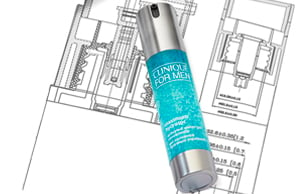What is Polyethylene (pe)?
Polyethylene is a general purpose or commodity thermoplastic that is characterized along side with Polypropylene in the Olefin family.
PE is produced by the addition or radical polymerization of ethylene monomers. Ziegler-Natta and Metallocene catalysts are utilized to do polymerization.
Properties of Polyethylene (PE)
PE has the highest annual production volume of all plastics due to its low cost. PE has a low specific gravity of approximately 0.95 g/cc but changes slightly with the different characterizations of Polyethylene. PE is a family of material that range from Low Density Polyethylene, (LDPE), to Medium Density Polyethylene, (MDPE), to High Density Polyethylene, (HDPE), all the way to Ultra High Molecular Weight Polyethylene, (UHMWPE).
PE’s high crystallinity account for its relatively high melting point, (ranging from 110 degrees Celsius for LDPE to 138 degrees Celsius for HDPE), its good chemical resistance, and its high translucency.
The crystalline structures disrupt light transmission through the matrix and destroy clarity. PE has a low glass-transition temperature of -120 degrees Celsius, therefore it is relatively flexible at room temperature, giving it good toughness and impact resistance.
PE has relatively low tensile strength, and poor UV-resistance. If the intended application requires extended sunlight exposure, weatherability agents can be added to improve the polymer’s resistance to UV-light.
Processing of Polyethylene (PE) Plastic
Different polyethylene types can be utilized in processes: injection molding, extrusion, blow molding, and various film creation processes like calendaring or blown film extrusion.
- HDPE can be handily processed by injection molding, blow molding, extrusion, and roto-molding. It is an ideal material for injection molding and is significantly used for continuous and batch production.
- The most well-known processing method utilized for LDPE is extrusion. However, LDPE can be processed by roto-molding or injection molding also.
- UHMWPE is processed by sintering, compression molding, gel spinning, and ram extrusion.
- Polyethylene cannot be processed by 3D Printing since it is harder to work with it. However, presently, recycled and green polyethylene are picking up prevalence to be processed by 3D Printing.
How to Select for use?
Proper selection of a grade of polyethylene resin for use in applications is based off three important properties: density, melt index, and molecular weight distribution, so be sure to consult with our experts to help you find the best solution for your product.








